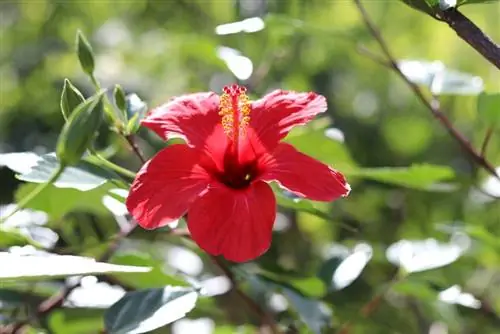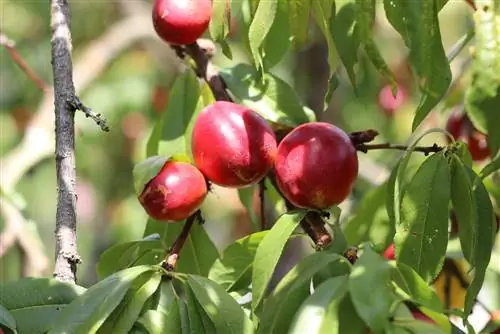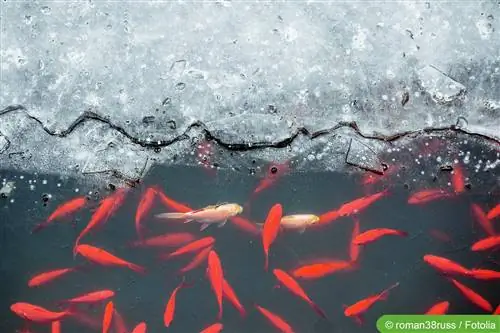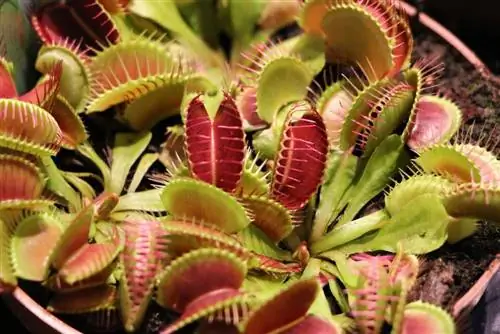- Author admin [email protected].
- Public 2023-12-17 03:39.
- Last modified 2025-01-24 12:45.
Depending on its origin and requirements, a plant can overwinter outside or must be brought indoors for the cool months. Below we differentiate between frost-hardy, moderately hardy and non-frost-hardy potted plants.
Overwintering frost-hardy potted plants
Our native plants or those from comparable climate zones have gradually adapted to the different conditions in the different seasons. For this reason, potted plants are largely frost-hardy and can safely spend average winters outside. Nonetheless, some measures should be taken to ensure that plants thrive both during and after the cool season.
Examples of potted plants that can overwinter outdoors:
- Boxwood (Buxus sempervirens)
- Bamboo (Bambusoideae)
- Grape heather (Leucothoe)
- Coneflower (Echinacea)
- Lavender heather (Pieris)
With hardy potted plants, you should pay particular attention to the sensitive root system. It is best to place the respective bucket on a wooden or Styrofoam plate. It is also recommended to line the inside of the bucket with Styrofoam and possibly integrate a brushwood cover. Not to forget that you can wrap the plant creatively with fleece or jute. These tools offer the plant additional protection from the icy cold.
To protect the planter from cracking in winter, dig it in before the permanent frost begins and the ground is too hard for it. Even if the plant ball expands during the winter, no cracks can occur because the surrounding soil counteracts this. A good location for hardy potted plants that stay outside in the cool season is the wall of the house. If they are placed close to each other, they essentially “warm” and protect each other.
Overwinter potted plants that are not hardy
Potted plants from the Mediterranean region are generally not hardy - no wonder, since they don't experience any frost in their homeland. In other words: Due to the lack of need, these plants never developed an “antifreeze” in themselves. If they suddenly come into contact with sub-zero temperatures in our gardens, they are doomed to die: the water freezes in the cells, which subsequently destroys them.
After just one night of frost you find the plant in a catastrophic condition and have to give it away. Mushy leaves and/or blackened branches are clear signs of this. Accordingly, the owner of sensitive potted plants is required to overwinter their treasures internally.
Examples of non-frost-hardy potted plants that have to be kept indoors in winter:
- all citrus plants (Citrus and Fortunella)
- Hibiscus (Hibiscus Rosa Sinensis)
- Angel Trumpet (Brugmansia, Datura)
- Violet bush (Iochroma)
- Gardenia (Gardenia)
Potted plants that are not hardy need a roof over their heads. They are best kept in the winter garden. But of course not every hobby gardener owns this luxurious facility. Alternatively, bright basement rooms, garages and stairwells are also suitable.
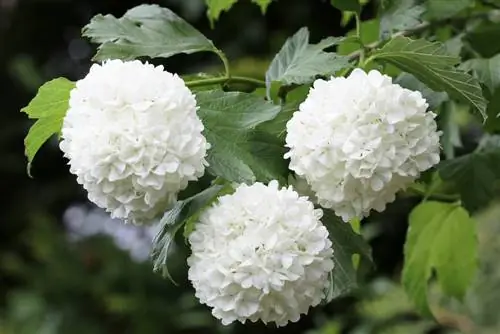
Important:
If possible, there should be no heating in the selected winter quarters. The potted plants feel very comfortable at temperatures between 5 and 10°C.
Of course, the characteristics of the respective plant also have to be taken into account. Here are two more general examples:
- Container plants that shed leaves prefer dark rooms and low temperatures, otherwise they will sprout too early.
- In contrast, evergreen plants, such as laurel or oleander, cannot tolerate absolute darkness. However, low temperatures are also essential for them to slow down their metabolism.
Tip:
Depending on the type of plant, the pot can be quite heavy. In order to avoid transporting it into the house becoming a real herculean task, we recommend thinking about a practical plant roller when purchasing the plant.
Note
If you have no way of providing your non-hardy potted plant with the necessary environment, it makes sense to use the wintering service of a nursery. If desired, the plant can also be cared for there. After the frosty period, you pick up your plant again.
Conditionally hardy potted plants overwinter
Whether conditionally hardy potted plants can stay outside or have to be brought indoors depends primarily on the region in which they are to survive the winter.
Rules of thumb
- Conditionally frost-hardy potted plants can tolerate a few degrees below zero (down to approx. -5°C).
- If local temperatures do not fall below this value, the plants can overwinter outside.
- If you live in a place where temperatures often drop below -5°C in winter, the potted plants should overwinter in a suitable room.
Examples of partially hardy potted plants:
- Olive (Olea)
- Passionflower (Passiflora)
- Viburnum (Viburnum)
- Hydrangea (Hydrangea)
- Dwarf palm (Chamaerops)
If you want to overwinter partially hardy plants outside, a certain amount of experience on the part of the gardener is an advantage in order to always be able to interpret the signals of the green creature correctly and react to them appropriately. In any case, the potted plants should be protected. Our tips from the section “Overwintering frost-hardy potted plants” will help in this regard.
Care for potted plants adequately in winter
The optimal spatial conditions are important. However, adequate care also plays a crucial role. Only through correct watering behavior and quick reactions to a pest infestation can the plant get through the winter safely. Watering is essential even in the cool season.
However, the motto reigns here:
Less is more.
Water sparingly is only recommended when the top layer of potting soil feels dry. In order not to miss this moment, simply carry out the well-known finger test regularly. The basic rule is: watering is done no more than once a week.
Fertilizing is not necessary during the entire winter period - on the contrary, it should be deliberately avoided so as not to stimulate the plant to flower at the wrong moment. To avoid fungal diseases, it is recommended to continually collect fallen leaves. In winter, plants slow down their metabolism. This makes them particularly vulnerable to pests. It is therefore important to check the branches and the undersides of the leaves daily so that you can intervene immediately if pests appear.
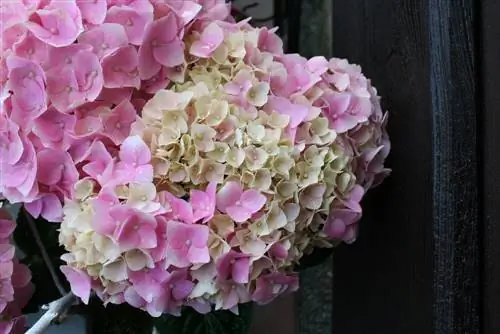
Note:
Container plants that were exposed to infestation before overwintering should definitely be placed in a separate location. This prevents possible infection of other plants.
Fighting pests on potted plants
Anyone who notices that pests are tampering with the plant must act quickly. The main potential pests include aphids, caterpillars and spider mites.
Although aphids are relatively harmless, they appear more frequently in winter - and the masses can definitely cause damage. After all, the countermeasure is simple: you just need to shower the leaves vigorously from below. To protect the plant ball from too much moisture, you can use a simple plastic bag.
Caterpillars sometimes sneak into the winter quarters. They can be eliminated simply by collecting them. It is advisable to wear protective gloves during this process to avoid possible allergic reactions.
You can get rid of spider mites with water. If they are sprayed with the liquid, they usually quickly run away. A possible alternative is to spray the spider mites with a solution of soft soap.
Tip:
Showering the undersides of leaves with water is generally a good option for combating pests - whether during the winter, spring or summer.
After wintertime
As soon as the frosty period is over and the temperatures remain stable above 10°C, the potted plants can gradually be returned to their original place outdoors. The Ice Saints are a good guideline for the perfect time, because spring usually takes over after the traditional memorial days at the latest.
Caution
It doesn't make sense to throw the potted plant into cold - or rather warm - water from now on. To avoid the unfavorable outdoor shock, you should gradually reacquaint them with their summer territory.
Notes
It is best to slowly acclimate the potted plant to the full brightness and warmth of sunlight after the long winter. This means placing them in the shade at first and then gradually making them brighter and sunnier. Finally, the plant receives its intended location.
Rule of thumb
The plant should spend at least the first two weeks after overwintering in a shady spot - with minimal sunlight. If you expose them to the more intense sun too early, the young shoots and leaves risk sunburn.
Important
After the winter, every potted plant must be repotted. It is best pulled out of the old container when the soil is moist. Knowing this fact helps to determine the right moment for repotting.

Are there any roots growing out of the hole at the bottom of the pot? Then just don't grab the secateurs and make short work of it. It is better to sacrifice the vessel. Clay pots are broken and plastic containers are carefully cut open with sharp scissors. Care must be taken not to damage the plant.
Tip:
If the vessel is made of clay, the shards can be used later for drainage purposes.
The soil must not close the drainage hole in the new pot, otherwise there is a risk of waterlogging with every watering process. And waterlogging is known to be extremely dangerous for almost every plant (rot). To prevent this, a drainage is placed. The hole is covered with a piece of pottery. A layer of gravel is placed on top and then the potting soil follows.
As far as the new planter is concerned, the following aspects should be taken into account:
- There should be about two finger widths more space around the ball of the foot.
- It shouldn't be black if possible. A black planter absorbs so much heat in summer that the potted plant can be damaged.
Tip:
The black pot is unfortunately already there? No problem, it just needs to be painted over in a light color. It can now be used without any problems.
As soon as the new plant pot is prepared, carefully tear open the root ball that survived the winter well. This ensures that new fibrous roots can form, which subsequently promote the growth and prosperity of the plant. The substrate is filled into the resulting holes and around the bale. Classic potting soil made from peat and lime-free clay is very suitable for most plants.
Conclusion
Proper wintering of potted plants is essential in order to experience magical blooms again next year. Mediterranean species in particular need to be brought indoors during the frosty months. In contrast, plants from our latitudes can often remain outdoors, but they also need a certain amount of frost protection. It is therefore important to be clear about what the respective plant needs in the cool season before initiating overwintering measures.

